Tele Vue-85: Imaging the Skies Over Queensland Australia!
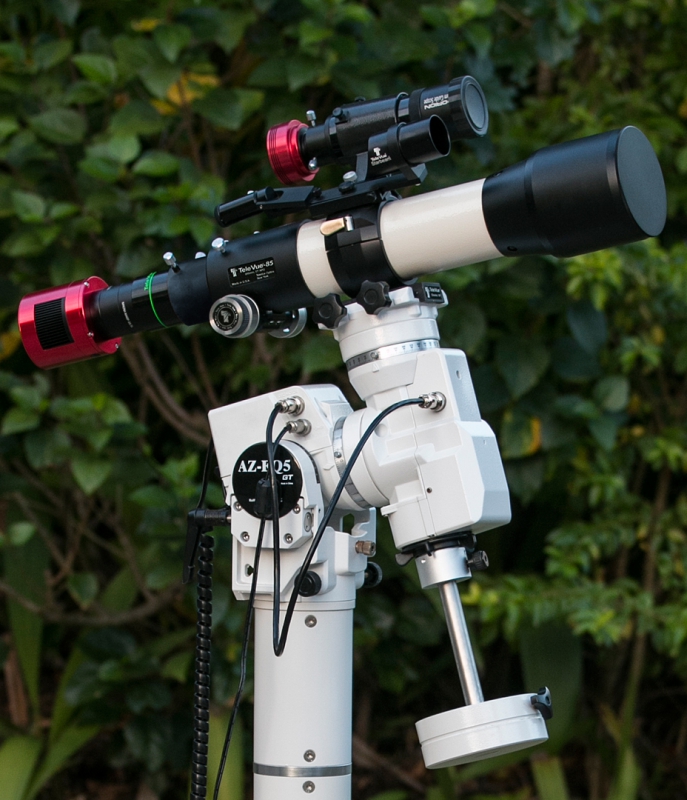
Imaging was done from his driveway in Queensland Australia in Bortle class 5 (suburban) skies. We’re impressed that the images presented here are composed of color sub-frames without the use of filters or calibration frames.
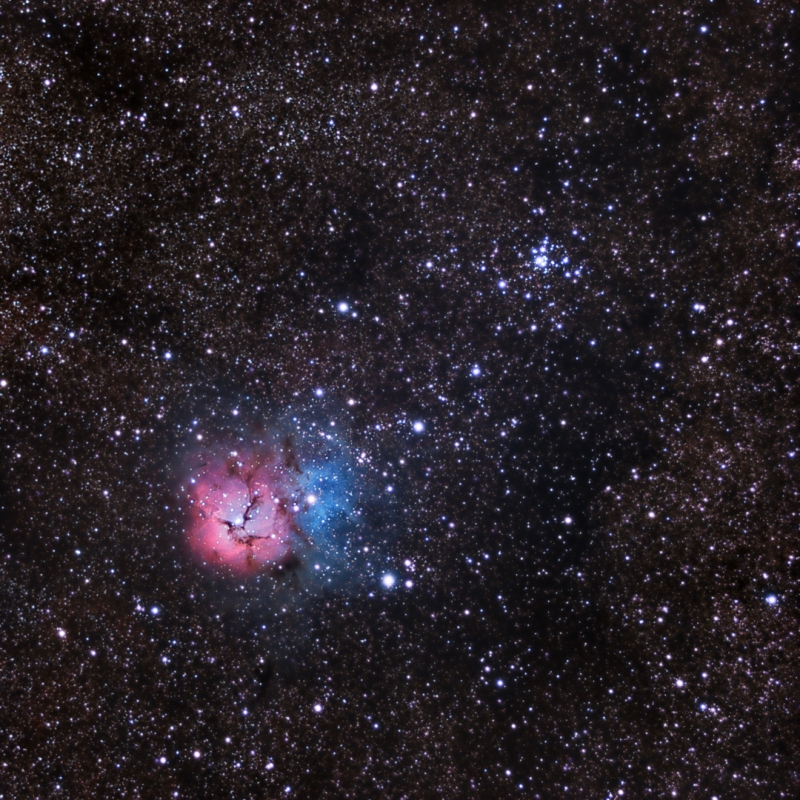
Imaging: 32 x 300” lights (Temperature -5C; offset 5; gain 10) and no calibration frames from Cairns, Australia in Bortle Scale (1 best, 9 worst) 5 skies. Processing with PixInsight and Photoshop.
“Trifid Nebula” (M20 or NGC-6514) was named by John Hershel (1792-1871) who dubbed it the “Trifid” — from Latin for three parts or lobes — based on his telescopic observations of the divisions in the central part of the object. A single giant star in the center of the nebula powers the red glow of hydrogen gas surrounding it. The outer blue zone is starlight reflecting off of dust. The stars around the nebula are an open cluster.
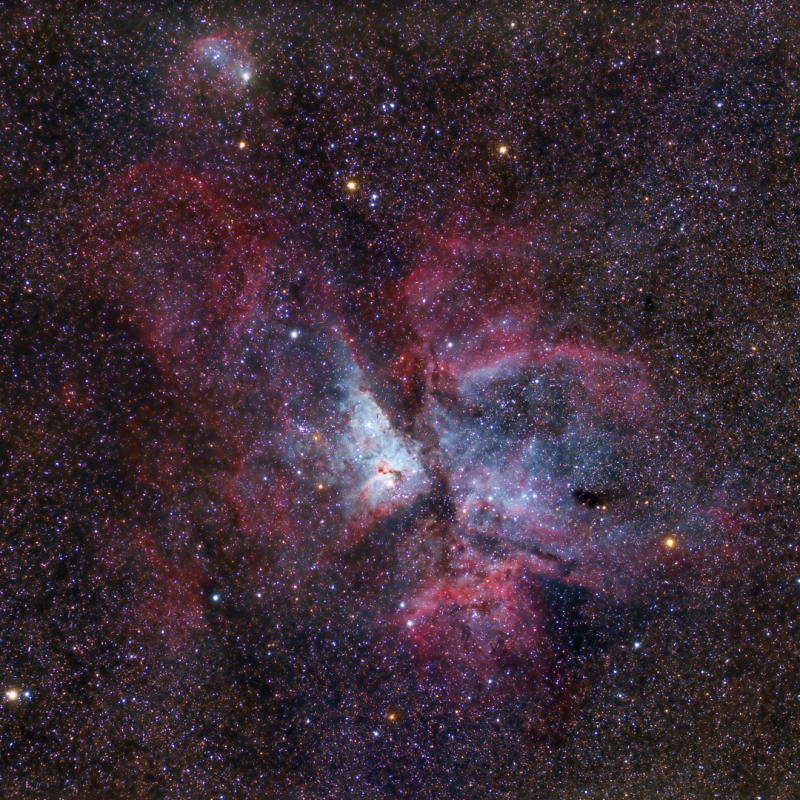
Imaging: 42x 180” lights (ISO 1600) and no calibration frames from Cairns. Processing with PixInsight.
The “Eta Carinae” or “Great Carinae” Nebula (NGC-3372) is located in the southern sky constellation of Carina (ship’s keel). The shape of the nebula is sculpted by shockwaves and radiation pressure from many supernovae explosions. Radiation has ionized regions in the nebula and caused them to glow – such is the telltale reddish glow from ionized hydrogen atoms recombining with electrons. The dark shapes entwined in the nebula are remnants of clouds of cool gas and dust from which the first giant stars in the nebula were born. The most energetic star in the complex, double-star Eta Carinae, is thought to be on the verge of a supernova explosion. It is the bright star near the tip of the triangle structure in the center of the image. At the top left is open cluster NGC-3324.
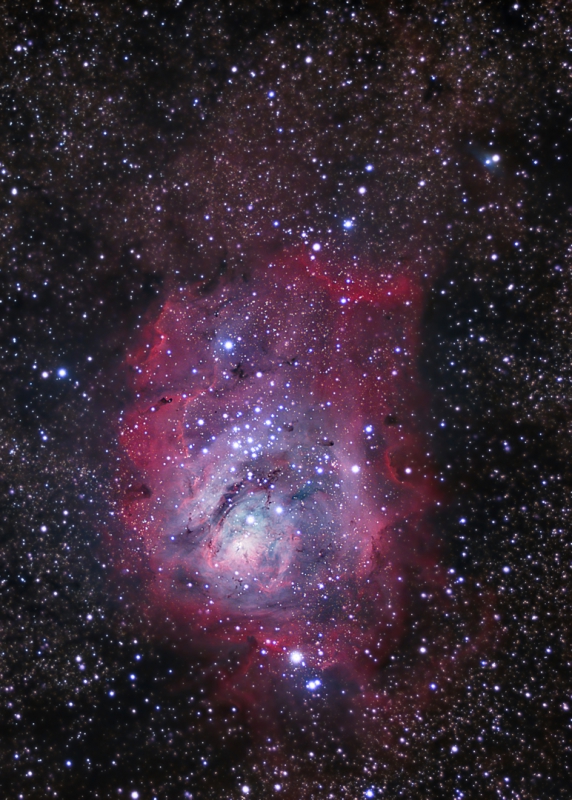
Imaging: 40 x 180” lights (Temperature -5C; offset 50; gain 101) and no calibration frames from Cairns, Australia in Bortle Scale (1 best, 9 worst) 5 skies. Processing with PixInsight and Photoshop.
“Lagoon Nebula” (M8 or NGC 6523), in the constellation Sagittarius, is a giant star-forming region with an open cluster of stars embedded within. A giant O-type star pumps out massive amounts of ultraviolet light that energizes the gasses in the nebula and causes them to emit light in their distinctive characteristic colors.
We asked Vesselin how he got into the hobby and he told us that “astrophotography is a perfect mix of science, technology, and art gelled together with a healthy dose of geekiness. It suits perfectly my personality.”
Vesselin previously used remote telescopes before deciding he could better spend the money by investing in personal equipment. He wanted something high-end “without breaking the bank” and chose the Tele Vue-85 because “everything made by Tele Vue has a premium quality feel to it without being over the top.”
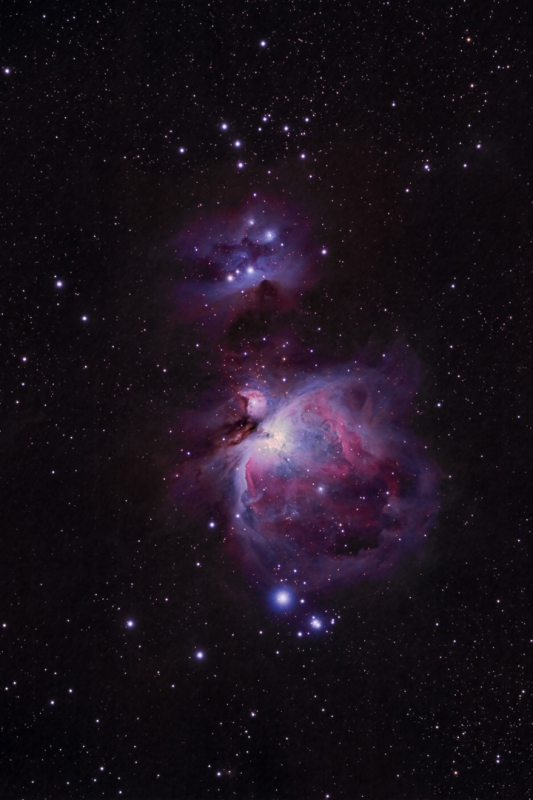
Imaging: ISO 400: 30×180 & 50×20”, ISO 640: 20×180” & 30×20” from driveway in suburban skies.
The Orion Nebula (M42 or NGC 1976) is the most easily visible and closest region of massive star formation to us. Scientists believe there are 700 stars at various stages of evolution within the nebulosity you see in the photo (close-up crop below).
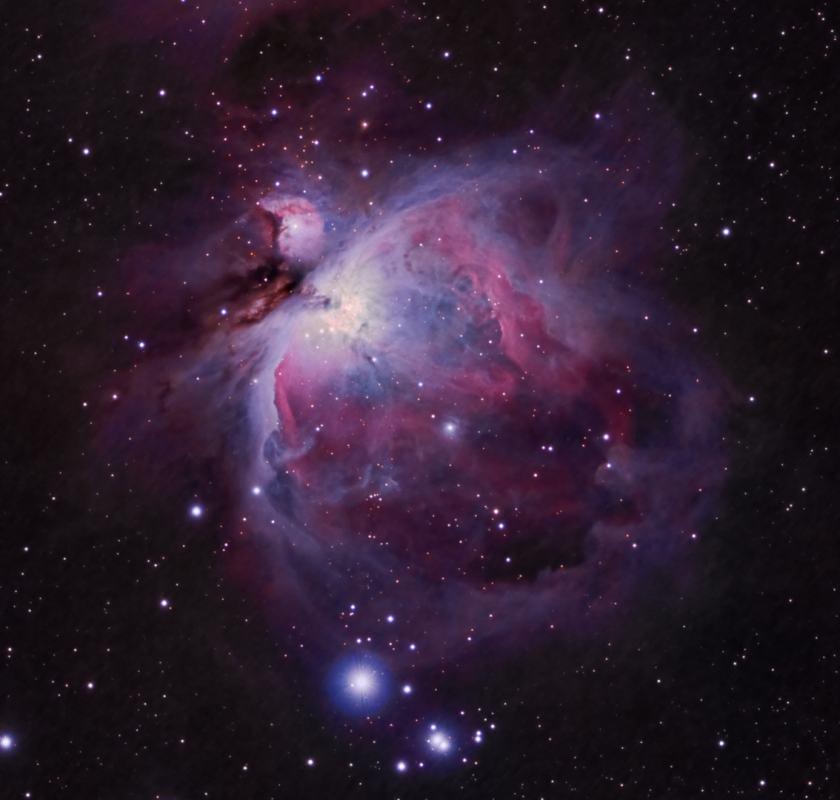
This means there are plenty of hot, giant, young stars to pump-up the electrons in the cloud of hydrogen gas in the nebula and cause them to emit light. The red color in the image is from ionized hydrogen that has been excited by giant stars that are being born within the nebula. The wisps and folds are shaped by stellar winds that form shock waves in the nebula’s gas clouds.
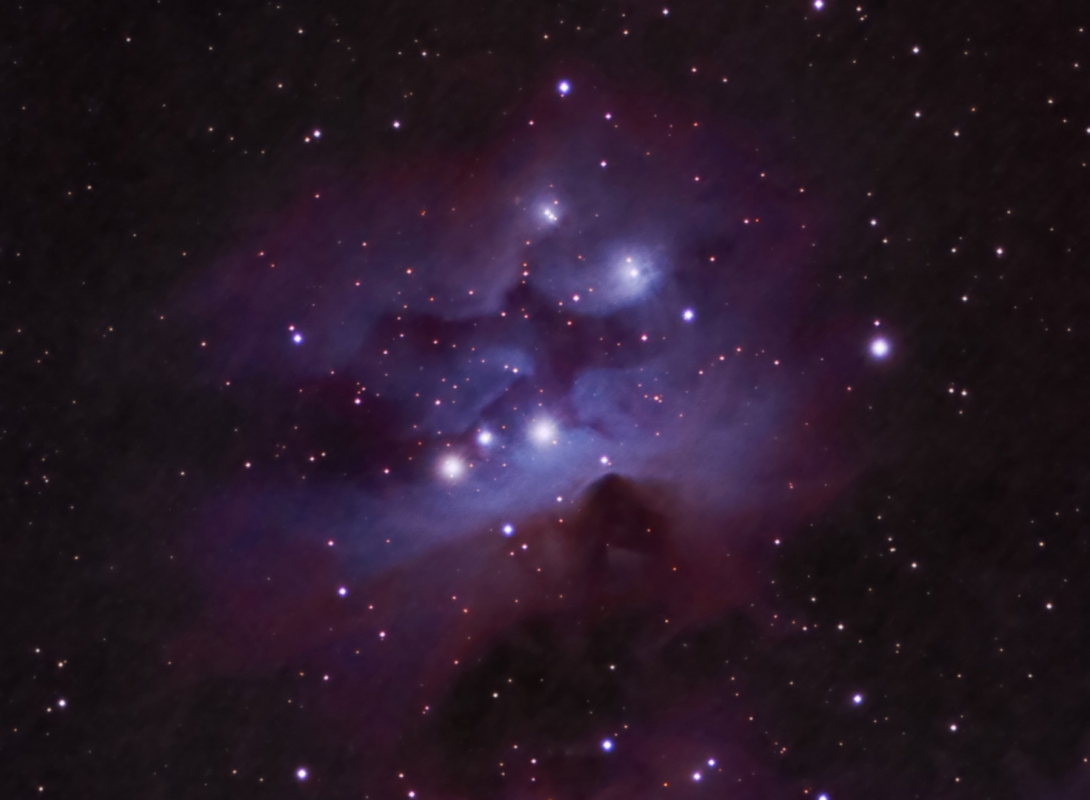
The outline of a shadowy “Running Man” (Sh2-279) is seen in the nebulosity above the Orion Nebula. This is a smaller region of star formation where the red glow of Hydrogen gas mixes with blue light reflected from the dust grains.
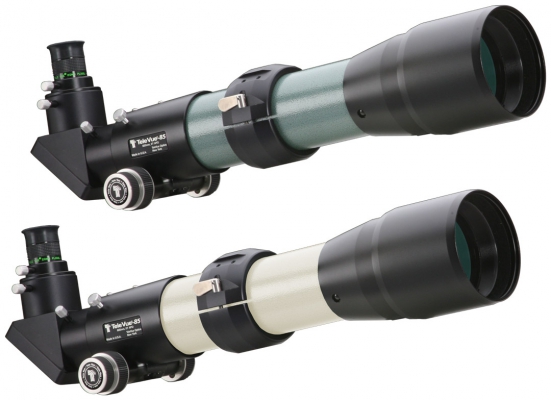
With an 85-mm APO (Doublet) objective and 600-mm focal length, this f/7 refractor offers a combination of optical performance and airline portability that delights amateur astronomers, birders, and reviewers alike. Sky & Telescope reported resolving close double-stars, viewing lunar detail, viewing deep-sky, and photographic uses were: “Truly awesome! …Incredible!…the view almost blew me off my chair!…” The conclusion, “…an extremely powerful, compact instrument capable of delivering stunning images of the universe.” Maximum visual field-of-view is 4.4° (with our 41 -mm Panoptic [mobile site] at 14.6x or 55-mm Plössl [mobile site] at 10.8x) allows use as a self-finder. Optional Nagler 3-6mm Planetary Zoom [mobile site] yields 100x – 200x in this scope for obtaining optimal planetary observing power to match the seeing conditions.

The addition of the TRF-2008 0.8x Reducer/Flattener (mobile site) converts the Tele Vue-85 to 480mm f/5.6 for flat-field, fast astro-photography with any APS-C camera that accepts a T-Ring.
- Read more first-person experiences with the Tele Vue-85 on our blog.
- See more info on the Tele Vue-85 page (mobile site) on our website.


